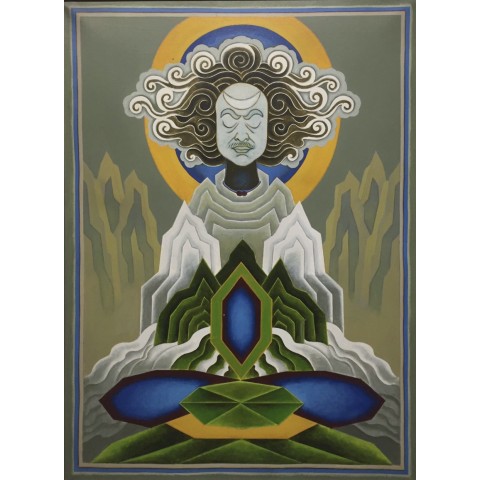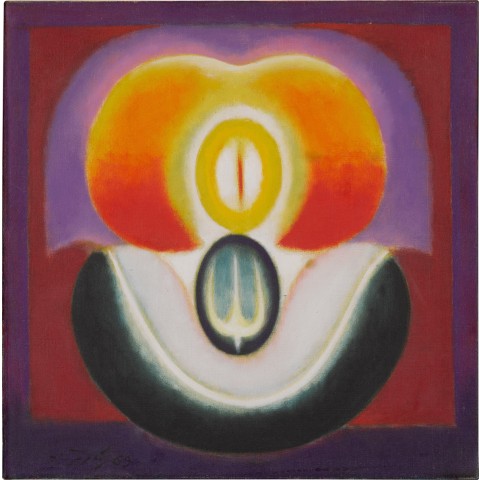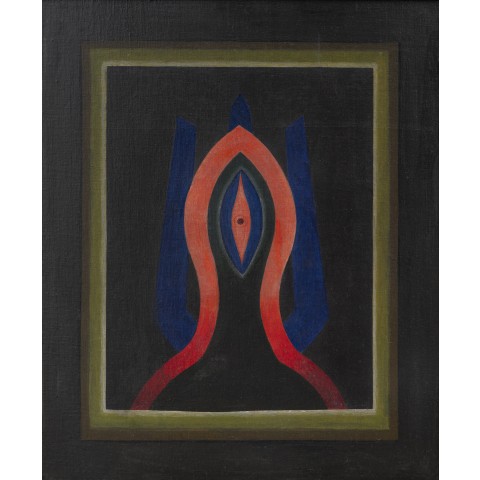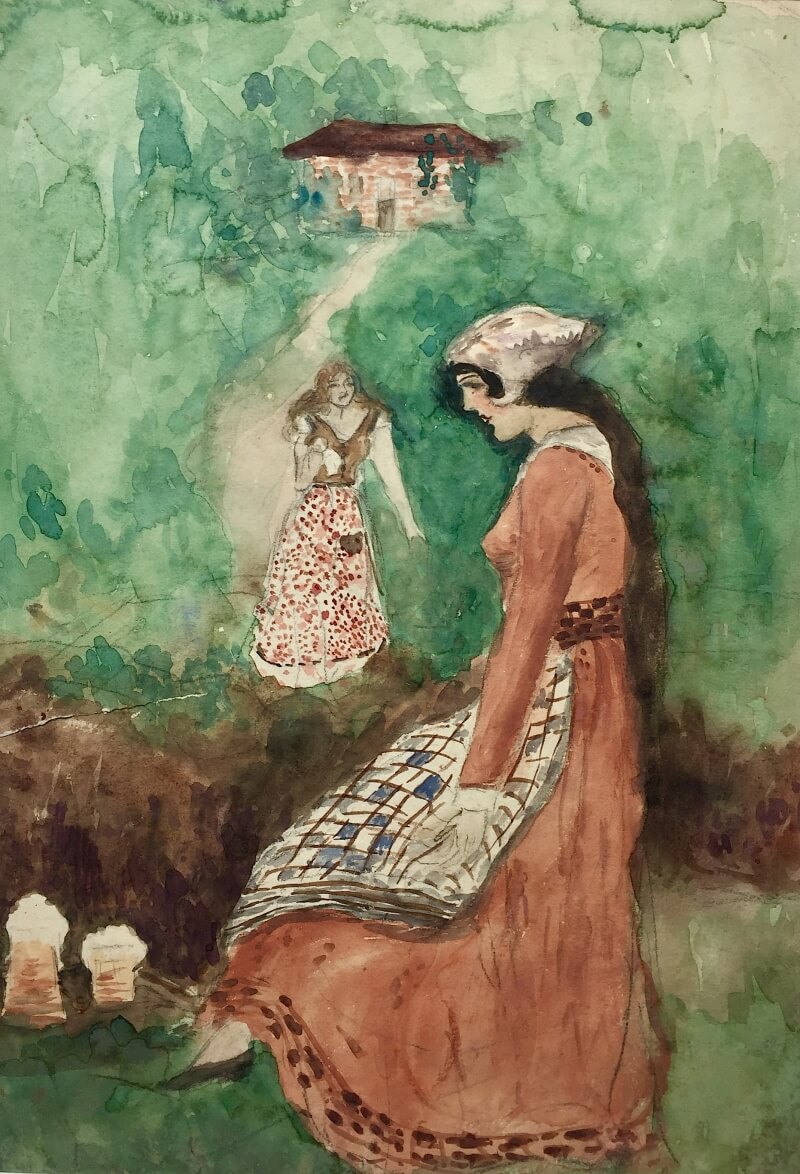
GR SANTOSH
Akara Modern
1929 -1997
Born as Gulam Rasool Dar in a Shia Muslim household in Srinagar in
Kashmir on 20 June 1929, the artist took his wife’s Hindu name ‘Santosh’ as his
own, in a move challenging patriarchy and religion.
Following the death of his father, young Gulam was compelled to
work as a weaver, papier-mâché artist, and signboard painter. He learnt to
paint watercolour landscapes under Dina Nath Raina in Kashmir before studying
under N. S. Bendre at M. S. University, Baroda, on the recommendation of S. H.
Raza. In Baroda, he produced a large
body of figurative and landscape works, mainly in the cubist style.
The Hindu and Buddhist tantric cults that had coexisted with the
Sufi mysticism for millennia in Kashmir served as a source of inspiration for
Santosh. In 1964, Santosh had a profoundly spiritual experience at the Amarnath
cave in Kashmir, which led him to become interested in tantric philosophy.
Inspired by the ancient purusha-prakriti notion of cosmic creation, he
pioneered the neo-tantra school and conveyed in his works the synthesis of the
sexual and the transcendental. Santosh was a well-known poet and writer in
Kashmiri and Urdu who also wrote in English on tantric philosophy.
Santosh was awarded the Lalit Kala Akademi’s national award
thrice, in 1957, 1964 and 1973, the Kala Ratna Award by All India Fine Arts and
Crafts Society, New Delhi, in 1991, and received the Padma Shri from the
Government of India in 1977. He also won the Sahitya Akademi award for his
collection of poems, Besukh Ruh, in 1979. He passed away on 10 March 1997.
Images








